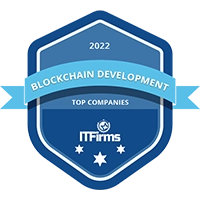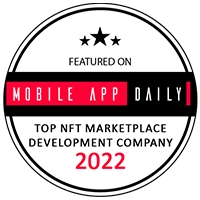Introduction: Revolutionizing App Development with LLMs and LangChain
Over the past few years, large language models (LLMs) have fundamentally changed the way we think about AI and application development. These powerful models are designed to understand, generate, and interpret human language with impressive accuracy. Applications that utilize LLMs can now handle complex tasks like generating content, answering questions, translating languages, and even conducting conversations in a more natural and coherent way.
LLMs, like OpenAI's GPT, have enabled businesses to automate processes, enhance user experiences, and solve problems that would have been considered unfeasible just a decade ago. So, why are LLMs important? Quite simply, they unlock a new dimension of AI-powered interaction that allows machines to process and generate human-like text. This makes them perfect for a range of applications from customer support bots to personalized content creation tools.
What is LangChain? Unlocking the Power of Modular NLP Frameworks
Introducing LangChain: The Backbone of LLM-Powered Applications
LangChain is an advanced framework designed to help developers build language model-powered applications with ease. Think of it as a toolbox for creating apps that can understand and generate human-like language. It provides all the components you need to manage the interactions between LLMs and the rest of your application, making the process more streamlined and efficient.
Instead of building an application from scratch, you can rely on LangChain's pre-built modules to handle everything from data input to response generation. This significantly reduces the complexity of working with LLMs, allowing developers to focus on creating innovative and useful applications without getting bogged down in the technical details of natural language processing.
The LangChain Ecosystem: Components, Chains, and Tools That Simplify Development
LangChain's ecosystem is built around three key ideas: components, chains, and tools. These concepts make it possible to break down complex tasks into smaller, manageable pieces. Let's break each one down:
- Components: These are the building blocks of your application. Each component performs a specific function, like processing user input or generating responses from the LLM. You can mix and match these components to fit your specific use case.
- Chains: Chains are workflows made up of different components that work together to complete a task. For example, a chain might take user input, run it through a sentiment analysis component, and then generate a response based on the user's mood.
- Tools: LangChain includes a variety of tools that make building LLM-powered applications easier. These tools include APIs for interacting with LLMs, utilities for handling input/output, and modules for connecting to databases or external APIs.
With LangChain, developers can create sophisticated workflows by combining various components and chains. This modular approach is what makes LangChain so flexible and easy to use, whether you're building a simple chatbot or a complex AI-powered assistant.
How LangChain Streamlines Building with Pre-Trained LLMs
One of the most time-consuming aspects of developing with LLMs is figuring out how to effectively integrate pre-trained models into your applications. LangChain handles much of this for you. It provides a unified interface that allows you to work with popular LLMs like OpenAI's GPT models or other language models from platforms like Hugging Face.
Instead of managing each step manually, LangChain simplifies the process by abstracting the complexities of working with LLM APIs. Whether you're performing basic text generation or more advanced tasks like retrieving specific documents, LangChain makes sure your workflow runs smoothly and efficiently.
Getting Started with LangChain: Setting Up Your Development Environment
Before diving into building an LLM-powered application, you need to get your workspace ready. Setting up the right environment will ensure a smooth and efficient development process. Let's break this down into actionable steps so you can follow along easily.
Step 1: Preparing Your Workspace for LLM Development
To start, you'll need to have a proper setup that includes the necessary tools and dependencies for developing LLM-powered applications with LangChain. Here's how you can prepare your environment:
Installing LangChain and Essential Dependencies
The first step in getting started is to install LangChain, along with a few essential dependencies. You'll need Python installed, as most of the work will revolve around it. If you haven't already, download and install Python from the official website. Once Python is ready, you can install LangChain using pip, which is Python's package manager.
Here's how you can install LangChain:
pip install langchain
You'll also need to install the OpenAI API package if you plan on integrating OpenAI's models:
pip install openai
With these dependencies in place, you're ready to start building your project.
Virtual Environments: Why They Matter and How to Set Them Up
Virtual environments are essential for isolating your project and its dependencies from your system-wide Python setup. They prevent conflicts between packages and ensure that your project remains organized and manageable.
To create a virtual environment, follow these steps:
- Navigate to your project directory in the terminal.
- Run the following command to create a virtual environment:
- Activate the virtual environment:
python3 -m venv env
- On macOS and Linux
You'll notice that your terminal prompt now includes (env), indicating that the virtual environment is active. This ensures that any packages you install will be isolated to this environment, keeping your project clean and organized.
Step 2: Accessing OpenAI LLMs with LangChain: How to Get Your API Key
LangChain integrates seamlessly with OpenAI's LLMs, but you'll need an API key to use them. Getting one is simple:
- Visit OpenAI's website and sign up or log in if you already have an account.
- Navigate to the API section.
- Create an API key, which will look like a long alphanumeric string.
Once you have your API key, store it safely, as you'll use it frequently in your projects. You can set it up in your environment by running:
export OPENAI_API_KEY="your-api-key-here"
Alternatively, include it in your Python script:
import os
os.environ["OPENAI_API_KEY"] = "your-api-key-here"
Now your environment is ready to access OpenAI's powerful language models.
Step 3: Configuring Your Project: Best Practices for a Seamless Start
To ensure your project runs smoothly, it's important to follow some best practices during configuration:
- Organize Your Files: Keep your Python scripts, configuration files, and dependencies organized. A typical project might have directories for scripts, data, and logs.
- Use .env Files for Sensitive Data: Don't hard-code sensitive data like API keys into your scripts. Instead, use environment variables or .env files to keep your credentials secure.
- Version Control: Use Git to track changes in your project. This will make collaboration easier and help you manage versions of your code.
With these steps completed, you're now ready to start building your LLM-powered application with LangChain.
Ready to Build Your LLM-Powered Application?
Contact UsCore Components of LangChain: Building Blocks for LLM-Powered Applications
LangChain is designed to be modular and flexible, allowing you to combine different components to build custom applications. Let's explore the key building blocks.
Chains: The Secret to Orchestrating Your App's Workflow
Chains are the backbone of your LLM-powered application. A chain is essentially a series of tasks or components connected in sequence to complete a specific workflow. Think of them as a pipeline through which data flows, from input to processing, and finally to output.
How to Create and Manage Workflow Chains for Complex Use Cases
Creating a workflow chain in LangChain is straightforward. For example, if you're building a customer service chatbot, your chain might include components for sentiment analysis, intent recognition, and response generation.
Here's a simple Python example of creating a chain:
from langchain.chains import SimpleChain
from langchain.llms import OpenAI
llm = OpenAI(model_name="text-davinci-003")
chain = SimpleChain(
llm=llm,
input_variable="customer_query",
output_variable="response"
)
response = chain.run("What are your business hours?")
print(response)
In this case, the chain takes a customer query, runs it through the LLM, and generates a response.
Prompt Templates: Personalizing AI Responses with Dynamic Prompts
Prompts are the instructions or questions you give to the LLM. By using prompt templates, you can create dynamic prompts that adjust based on user input, making responses more personalized and relevant.
Crafting Effective Prompt Templates for High-Quality Outputs
Prompt templates allow you to insert variables into prompts. This makes it easy to create flexible, reusable prompts that adapt to different scenarios.
Here's an example of a prompt template:
from langchain.prompts import PromptTemplate
template = """You are a helpful assistant. {user_input}"""
prompt = PromptTemplate(input_variables=["user_input"], template=template)
final_prompt = prompt.format(user_input="What is the weather today?")
print(final_prompt)
This structure ensures that your prompts are both informative and adaptable, resulting in higher-quality outputs from the LLM.
Example Selectors: Improving Response Accuracy by Learning from the Best
LLMs can improve accuracy by referencing specific examples. LangChain allows you to use example selectors, which identify relevant examples to guide the model's response.
Semantic Similarity Selectors: Why They Matter for Tailored Outputs
Semantic similarity selectors work by comparing input to a set of pre-defined examples and selecting the most relevant one. This ensures that responses are tailored to specific queries.
Here's how you might use a semantic similarity example selector:
from langchain.prompts.example_selector import SemanticSimilarityExampleSelector
from langchain.vectorstores import FAISS
from langchain.embeddings import OpenAIEmbeddings
examples = [
{"input": "pirate", "output": "ship"},
{"input": "pilot", "output": "plane"},
]
example_selector = SemanticSimilarityExampleSelector.from_examples(
examples,
OpenAIEmbeddings(openai_api_key="your-api-key"),
FAISS,
k=1
)
# Example prompt
prompt = "What does a pirate use?"
selected_example = example_selector.select(prompt)
print(selected_example)
Using this approach ensures the model generates accurate, context-aware responses.
Output Parsers: Transforming Raw AI Responses into Structured Data
LLMs often generate unstructured responses, but with output parsers, you can format these outputs into structured data like JSON or specific text formats.
How to Format, Parse, and Utilize LLM Outputs for Practical Applications
Here's an example of parsing an AI-generated response into structured JSON:
from langchain.output_parsers import StructuredOutputParser, ResponseSchema
response_schemas = [
ResponseSchema(name="question", description="The user's question"),
ResponseSchema(name="answer", description="The AI's response")
]
output_parser = StructuredOutputParser.from_response_schemas(response_schemas)
# Creating the prompt with the parser
template = """Question: {question}"""
prompt = PromptTemplate(input_variables=["question"], template=template)
# Format the AI response
formatted_response = prompt.format(question="What is AI?")
print(output_parser.parse(formatted_response))
Document Loaders and Text Splitters: Handling Large Data Sets Efficiently
Handling large documents can be tricky. LangChain makes it easy to load documents and split them into smaller chunks for processing.
Breaking Down Complex Documents for Smarter AI Processing
Using document loaders and text splitters, you can ensure that your LLM can handle large data sets effectively.
from langchain.document_loaders import TextLoader
from langchain.text_splitter import RecursiveCharacterTextSplitter
loader = TextLoader("path_to_large_file.txt")
documents = loader.load()
splitter = RecursiveCharacterTextSplitter(chunk_size=1000)
split_docs = splitter.split_documents(documents)
print(split_docs)
Agents and Toolkits: Creating Dynamic Interactions in LLM Apps
Agents in LangChain allow for more dynamic interactions by enabling your app to make decisions based on user input.
Building Intelligent Agents for Real-Time Decision-Making and Response
Agents can be deployed to dynamically select the best course of action for a query. For example:
from langchain.agents import initialize_agent
agent = initialize_agent()
response = agent.run("What should I do today?")
print(response)
With agents, you can build applications that are more interactive and responsive to user needs in real-time.
Choosing the Right LLM: Matching Models to Your App's Needs
When developing LLM-powered applications, selecting the right language model is crucial for delivering high-quality results. Your choice of model will depend on the specific use case, the type of data you're working with, and the desired output. Let's break down the options available, so you can match the right model to your app's needs.
Language Models: How to Select the Best LLM for Your Project
Language models are the foundation of any LLM-powered application. These models are designed to process and generate human-like text based on the data they've been trained on. But not all LLMs are created equal, and selecting the best one for your project requires some consideration.
If your application needs to generate coherent, context-aware text, then models like GPT-3 or GPT-4 from OpenAI are excellent choices. They excel at tasks such as writing, summarizing, and answering questions. On the other hand, if your project demands a specialized model trained on specific industry data, you might want to look at models available through Hugging Face or even explore fine-tuning a pre-trained model for your use case (more on that below).
What are Chat Models, and When Should You Use Them?
Chat models are a special type of language model optimized for conversational tasks. Unlike standard LLMs, chat models take into account the context of previous interactions, making them ideal for applications like chatbots, virtual assistants, and customer service tools.
When should you use them? If your app needs to handle back-and-forth conversations while maintaining context, a chat model is your best bet. These models ensure the conversation flows naturally by remembering previous queries, maintaining coherence throughout the interaction.
Understanding Text Embedding Models for Context-Aware Applications
Text embedding models are used to convert text into numerical vectors. These embeddings capture the semantic meaning of the text, allowing for context-aware applications like document search, recommendation engines, or clustering similar content.
Text embedding models are especially useful when your app needs to understand relationships between texts, such as retrieving relevant documents based on a query or comparing the similarity between two pieces of content. By converting text into vectors, the model can perform calculations to determine how closely related different texts are.
Fine-Tuning Pre-Trained Models: How to Optimize LLMs for Specific Use Cases
Fine-tuning is the process of taking a pre-trained model and training it further on a specific dataset to improve its performance on a particular task. This is especially useful if your application requires domain-specific knowledge, such as legal, medical, or financial text.
To fine-tune a pre-trained model, you'll need a dataset tailored to your use case. For instance, if you're building an LLM for legal document summarization, you'd fine-tune the model on a dataset of legal documents. This will enable the model to produce more accurate and relevant summaries in that context.
Best Practices for Model Selection and Customization
When selecting an LLM for your project, keep the following best practices in mind:
- Understand Your Use Case: Define whether you need a general-purpose model or one fine-tuned for a specific domain.
- Start with Pre-Trained Models: Use pre-trained models as a starting point before fine-tuning to save time and resources.
- Leverage Embedding Models for Context: If your application requires understanding the relationship between texts, embedding models will be your go-to.
- Use Chat Models for Conversational Apps: For any application that involves dialogue or back-and-forth interaction, chat models are ideal.
- Test and Iterate: Once you've selected and customized your model, be sure to test it thoroughly in real-world scenarios and iterate as needed to improve its accuracy and performance.
Need Expert Help Building Your LLM-Powered App?
Contact UsLangChain in Action: Practical Applications and Use Cases
LangChain's versatility allows you to build a wide range of practical applications. Let's explore some common use cases where LangChain can power your LLM-driven solutions.
Building Conversational AI: Creating Chatbots and Virtual Assistants
One of the most popular applications of LLMs is building conversational AI, such as chatbots and virtual assistants. With LangChain, creating these applications becomes much more manageable, thanks to its flexible framework for managing dialogues and responses.
From Input to Output: Designing Smooth Conversational Flows
Creating a smooth conversational flow is critical for user satisfaction. LangChain allows you to handle multi-turn conversations where the chatbot remembers previous interactions and provides coherent responses.
Here's how you can structure a chatbot using LangChain:
from langchain.chains import ConversationChain
from langchain.chat_models import ChatOpenAI
llm = ChatOpenAI(model_name="gpt-4", api_key="your-api-key")
conversation = ConversationChain(llm=llm)
response = conversation.run(input="What is the weather today?")
print(response)
By maintaining context across multiple turns, LangChain helps you build a seamless user experience in chat applications.
Sentiment Analysis and Content Moderation: Automating Insights
Sentiment analysis involves evaluating text to determine whether it carries positive, negative, or neutral emotions. This is highly useful in customer service, social media monitoring, or content moderation.
Leveraging LLMs for Real-Time Content Review and Feedback
LangChain makes it easy to integrate sentiment analysis into your LLM-powered application. You can evaluate customer feedback in real-time or monitor social media posts for inappropriate content.
For example, here's how you might perform sentiment analysis using LangChain:
from langchain.llms import OpenAI
llm = OpenAI(model_name="gpt-4", api_key="your-api-key")
response = llm("Analyze the sentiment of this sentence: 'The service was terrible and I won't be coming back!'")
print(response)
With this setup, your application can quickly assess sentiment and take appropriate actions, such as escalating a negative review to customer support.
Language Translation: Enhancing Accuracy with LangChain's Modular Design
Building a language translation tool with LangChain is straightforward. LLMs are highly effective at understanding and translating text between different languages, and LangChain's modular design allows you to enhance accuracy by customizing the translation process.
Building Custom Translation Models to Fit Specific Industry Needs
You can train or fine-tune models specifically for industry-related translations, ensuring the terminology and context are accurate. This is particularly useful for technical or specialized fields like healthcare or law, where standard translations might not be precise enough.
Here's an example of integrating a translation model with LangChain:
from langchain.llms import OpenAI
llm = OpenAI(model_name="gpt-4", api_key="your-api-key")
translation = llm("Translate this to French: 'Hello, how are you?'")
print(translation)
This can be easily customized to handle more complex translations or industry-specific jargon.
Language Learning Apps: Personalized Learning Powered by LLMs
Language learning applications are a perfect use case for LLMs. They can dynamically generate grammar exercises, quizzes, and conversation practice for learners based on their progress and proficiency level.
Designing Adaptive, Engaging User Experiences for Language Learners
Using LangChain, you can design apps that provide personalized experiences for language learners. For example, the app could generate practice questions, assess answers, and offer tailored feedback based on the user's input.
Here's a simple example:
from langchain.llms import OpenAI
llm = OpenAI(model_name="gpt-4", api_key="your-api-key")
exercise = llm("Create a grammar exercise for learning English tenses.")
print(exercise)
Best Practices for Building LLM-Powered Applications with LangChain
Building LLM-powered applications with LangChain can be exciting, but to get the most out of it, there are best practices you'll want to follow. Let's go over some key strategies to help you build efficient, accurate, and scalable applications.
Choosing the Right LLM for Your Application: Factors to Consider
Choosing the best LLM depends on your specific project requirements. Do you need a model that can handle simple text generation, or are you building something that needs deep conversational skills, like a virtual assistant?
Here are some key factors to consider when selecting an LLM for your application:
- Use Case: If you're working on chatbots or conversational AI, opt for a chat model that's optimized for maintaining context. For tasks like summarization or translation, standard models like GPT-3 or GPT-4 work well.
- Model Size and Performance: Larger models tend to offer higher accuracy but at the cost of speed and resource usage. Consider your infrastructure's capabilities and balance model size against performance.
- Domain-Specific Needs: If you're in a specialized field like legal or medical, look into models fine-tuned for those specific domains. You might need to fine-tune a general-purpose model on your data to better align it with your application's goals.
Preprocessing Data for LLM Accuracy: Tips for Structuring Input
Preprocessing your data is crucial to ensuring accurate and high-quality outputs from your LLM. Clean and structured data helps the model better understand input and generate more precise results.
Here are some tips for preprocessing:
- Remove Noise: Make sure the data is free from irrelevant information, such as unnecessary symbols, broken sentences, or incomplete thoughts.
- Consistent Formatting: Maintain a consistent input format to help the model understand patterns. For example, if your input data includes user questions, keep the format uniform by ensuring all inputs follow the same structure.
- Handling Special Characters: Ensure any special characters (like emojis or symbols) are handled correctly, as they may affect the model's performance.
Fine-Tuning and Testing Your Model for Optimal Performance
Even though pre-trained LLMs are highly capable, fine-tuning is often necessary to optimize their performance for your specific application. Fine-tuning allows the model to adapt to your dataset, making it more accurate and aligned with your needs.
Once you've fine-tuned the model, it's essential to test it across different scenarios:
- Edge Cases: Test the model with unusual or uncommon inputs to see how well it can handle them.
- Real-World Data: Use real data that closely mimics what your application will encounter during actual usage.
- User Feedback: Gather feedback from real users to identify areas where the model can be improved.
Ensuring Scalability and Robustness: Preparing Your App for Growth
When building an LLM-powered application, it's vital to design with scalability in mind. You don't want your application to slow down or fail as your user base grows.
Here are a few strategies:
- Modular Architecture: Break your application down into smaller components (e.g., chains in LangChain) to make it easier to scale and maintain.
- Asynchronous Processing: Consider asynchronous processing for handling multiple user requests simultaneously without compromising performance.
- Load Testing: Run load tests on your application to simulate high-traffic scenarios and identify potential bottlenecks.
Security and Ethics in LLM-Powered Applications: Protecting User Data
Security and ethics are paramount when developing applications that rely on LLMs. Since LLMs process user data, safeguarding that information is critical to maintaining trust and compliance with data protection regulations.
Here's how to approach it:
- Data Encryption: Always encrypt sensitive user data, both at rest and in transit.
- Limit Data Retention: Only store user data for as long as necessary and ensure compliance with regulations like GDPR.
- Bias Mitigation: Test the model for bias and ensure it generates fair and ethical responses. Fine-tune and retrain your model to reduce the potential for biased outputs.
Step-by-Step: Building Your First LLM-Powered App with LangChain
Now that you understand the best practices, let's walk through building your first LLM-powered application using LangChain. This section will guide you from project setup to final optimization.
Step 1: Setting Up Your Project: Tools and Tips for Getting Started
Start by organizing your project environment to keep everything in order. Follow these best practices:
- Create a Project Directory: Keep your project files in one folder for easy access and management.
mkdir my-langchain-app
cd my-langchain-app
- Set Up a Virtual Environment: Use virtual environments to isolate your project's dependencies.
python3 -m venv env
source env/bin/activate
- Install Necessary Dependencies:
pip install langchain openai
This will install LangChain and the OpenAI API, which you'll use to interact with the LLM.
Step 2: Connecting to an LLM: How to Generate Text with OpenAI's Models
Next, you need to connect to an LLM, like OpenAI's GPT models. Ensure you have your API key ready.
Here's how to set up the connection:
from langchain.llms import OpenAI
llm = OpenAI(model_name="text-davinci-003", openai_api_key="your-api-key")
response = llm("What's the weather like today?")
print(response)
In this step, you're sending a simple prompt to the LLM and printing the response. This basic setup will act as the core of your app.
Step 3: Designing Dynamic Chains for Seamless Interactions
LangChain's strength lies in its chains, which allow you to design dynamic workflows for user interactions. A chain is a series of tasks the LLM performs based on user input.
For example, here's how you can create a simple conversation chain:
from langchain.chains import SimpleChain
from langchain.llms import OpenAI
llm = OpenAI(model_name="gpt-4", openai_api_key="your-api-key")
chain = SimpleChain(llm=llm, input_variable="user_input", output_variable="response")
response = chain.run("Tell me a joke.")
print(response)
This setup takes a user's input, processes it through the LLM, and returns the output in a structured manner.
Step 4: Adding Agents for Real-Time Responses
Agents in LangChain add another layer of interaction by dynamically deciding the best action based on user input. You can configure agents to call APIs, retrieve documents, or make decisions in real time.
Here's how you can add an agent to handle more complex queries:
from langchain.agents import initialize_agent
# Initialize an agent with pre-configured tools
agent = initialize_agent()
response = agent.run("What are the top news headlines today?")
print(response)
This agent can interact with other tools, fetch data, and provide real-time responses to the user.
Step 5: Testing, Debugging, and Optimizing Your LLM App for Real-World Use
Finally, no app is complete without testing and optimization. Run your app through various scenarios to identify potential issues and areas for improvement.
- Unit Testing: Test each component of your app separately to ensure they work correctly in isolation.
- Debugging: Use logging and debugging tools to trace errors or unexpected behaviors.
import logging
logging.basicConfig(level=logging.INFO)
- Optimization: Fine-tune your model's performance based on real-world usage, ensuring quick response times and efficient resource usage.
Want to Transform Your Business with AI-Powered Apps?
Contact UsLeveraging LangChain's Advanced Features for Enhanced Performance
LangChain offers powerful features that go beyond basic LLM functionality, enabling you to build smarter and more efficient applications. Whether it's integrating external data sources, handling large data sets, or ensuring accurate responses, LangChain has the tools to elevate your LLM-powered app.
Incorporating External APIs: Adding Functionality with Minimal Effort
One of the standout features of LangChain is its ability to seamlessly integrate with external APIs. By connecting your LLM-powered app to other services, you can add new functionality with minimal development effort. Need real-time data? Integrating an API like OpenWeather can provide up-to-the-minute weather information to your app. Want to pull in financial data or perform live translations? External APIs make it possible.
Integrating LangChain with External Data Sources and APIs
LangChain's flexibility shines when it comes to connecting external data sources like databases or APIs. Whether you want to access a proprietary database or a third-party API, LangChain makes integration straightforward. This allows your LLM-powered app to pull in relevant data from different sources, enriching the user experience and providing highly contextual responses.
For example, you could integrate an API for a customer service chatbot that retrieves user order details from a database and uses that data to provide personalized support.
Handling Large Data Sets: Using Indexes, Retrievers, and VectorStores
When working with large data sets, it's critical to have the right tools for searching and retrieving relevant information. LangChain offers Indexes, Retrievers, and VectorStores to help efficiently manage and query large volumes of data. These tools allow you to break down massive data sets and retrieve the most relevant information based on user queries.
Improving Response Time and Quality with Semantic Similarity and Output Parsers
When building LLM-powered applications, speed and accuracy are essential. LangChain provides tools like Semantic Similarity and Output Parsers to enhance the response quality of your app. These features enable you to fine-tune how the LLM responds, ensuring outputs are contextually relevant and formatted correctly.
Ensuring Accurate, High-Quality Outputs in Every Interaction
Semantic similarity compares user inputs with examples to determine the most relevant response. Output parsers, on the other hand, structure the raw text responses into the desired format, such as JSON, ensuring the output is clean and ready for further processing.
The Future of LLM-Powered Applications: Why LangChain Leads the Way
LangChain is not only a powerful framework for building LLM-powered applications today, but it's also positioned to evolve as new technologies and models emerge. Let's look at how LangChain prepares you for the future of AI-powered apps.
Adapting to New Models and Technologies: Staying Ahead with LangChain
The world of AI and LLMs is rapidly changing, with new models and technologies being introduced frequently. LangChain's modular architecture ensures that as new LLMs are developed, integrating them into your application will be seamless. Whether it's a new language model from OpenAI or a breakthrough in AI-generated content, LangChain's structure will allow you to adapt quickly.
Expanding Use Cases: From Healthcare to E-commerce and Beyond
LangChain's flexibility means it can be applied across a wide range of industries. From healthcare to e-commerce, finance, and education, LangChain enables businesses to create LLM-powered applications that solve real-world problems.
- Healthcare: Use LLMs for patient data analysis, diagnosis assistance, or personalized medical recommendations.
- E-commerce: Build advanced customer service chatbots or create personalized shopping experiences by analyzing user data.
- Education: Develop interactive learning platforms that adapt to individual student needs based on their input and progress.
The possibilities are nearly limitless, and LangChain's adaptable nature allows you to tailor it to the specific requirements of your industry.
Continuous Improvement: How LangChain Makes AI Application Development Easier Over Time
LangChain continuously evolves to meet the changing needs of developers. As new features and tools are added, building, optimizing, and maintaining LLM-powered applications becomes easier. LangChain's community-driven approach ensures that it will continue to innovate, offering developers the latest tools and techniques to stay ahead in AI development.
This framework provides continuous updates, ensuring you can integrate the latest performance improvements, tools, and integrations without needing to overhaul your entire system.
Why Appdupe is Your Go-To Partner for Custom LLM Solutions?
Appdupe brings unmatched expertise and innovation to the table when it comes to LLM development. With a proven track record in building cutting-edge AI solutions, Appdupe understands how to tailor large language models to meet your specific business needs, whether it's for automating customer service, developing chatbots, or enhancing content creation. Our team not only stays ahead of the latest AI advancements but also ensures a seamless integration process, offering end-to-end support from strategy to deployment. By partnering with Appdupe, you get access to custom LLM solutions that are scalable, secure, and optimized for performance, helping your business stay competitive in today's fast-evolving digital landscape.
Final Thoughts
In summary, partnering with Appdupe for LLM development ensures your business gains access to cutting-edge AI technology tailored to your specific needs. With extensive experience in building scalable, secure, and high-performance LLM solutions, Appdupe provides comprehensive support, from initial strategy to seamless deployment. Whether you're looking to enhance customer interactions, automate workflows, or develop innovative AI-driven applications, Appdupe's expertise will help you achieve your goals efficiently. By choosing Appdupe, you can leverage the full potential of large language models, keeping your business competitive and ready to adapt to the future of AI technology.





















